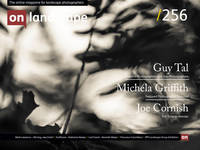Insights into the exhibition at Fountains Abbey
On the summer solstice last year Tim and Charlotte kindly published my article, Drawn to Rock, which describes a commission that included a small exhibition about Brimham Rocks (NT) in North Yorkshire, where it was also shown.
Brimham Rocks was a starter before the main course, a commission to photograph Fountains Abbey/Studley Royal. I am happy – and relieved – to say that this has now been fulfilled. It is hanging in various locations around the Fountains Abbey site. Except that the term “hanging” is a misnomer for reasons that will become clear later.
Without wishing to repeat the circumstances documented in Drawn to Rock, this was an artist-in-residence commission.
After the pandemic of 2020 caused a suspension of the commission I nevertheless did continue with the work, gradually growing in familiarity and confidence at Fountains Abbey. It was actually a relief when the exhibition date was postponed by a year. This gave far more time to see different seasonal and weather conditions, as well as allowing me to develop the concepts which give structure to the exhibition. The bulk of the work was therefore done through 2020 and 2021, as well as the very beginning of this year.
As a wilderness advocate and addict, I must be honest and say that a commission to photograph a ruined medieval abbey, an 18th century water garden and a carefully controlled and managed deer park was not necessarily my dream assignment. Nevertheless, numerous previous projects have proved that such challenges can be creatively stimulating, perhaps never more so than when you are less than 100% comfortable with the subject matter. And besides, Fountains Abbey estate is always a fabulous place to visit. Not for nothing is it described by historian Mark Newman as “The Wonder of the North”.

UNESCO have granted Fountains Abbey and Studley Royal (to give its full title) World Heritage Site status specifically because of the fusion of different – created – landscapes which follow in sequence down the valley of the River Skell. They describe this as a work of human genius. That could be debated, but there’s no doubt that the longer I spent there the more I grew to appreciate the strange and unique beauty that arises from this combination of the natural and the designed.
Justin Scully, the National Trust’s general manager of the estate, was very keen for me to explore all these habitats, and especially the deer park which is often overlooked because of the charismatic nature of the water garden and the abbey ruins. It was in the Deer Park that I found inspiration and early momentum. There are numerous ancient trees, lime, oak, pine, sycamore, yew, horse chestnut… and sweet chestnut, especially which make compelling subject matter.


